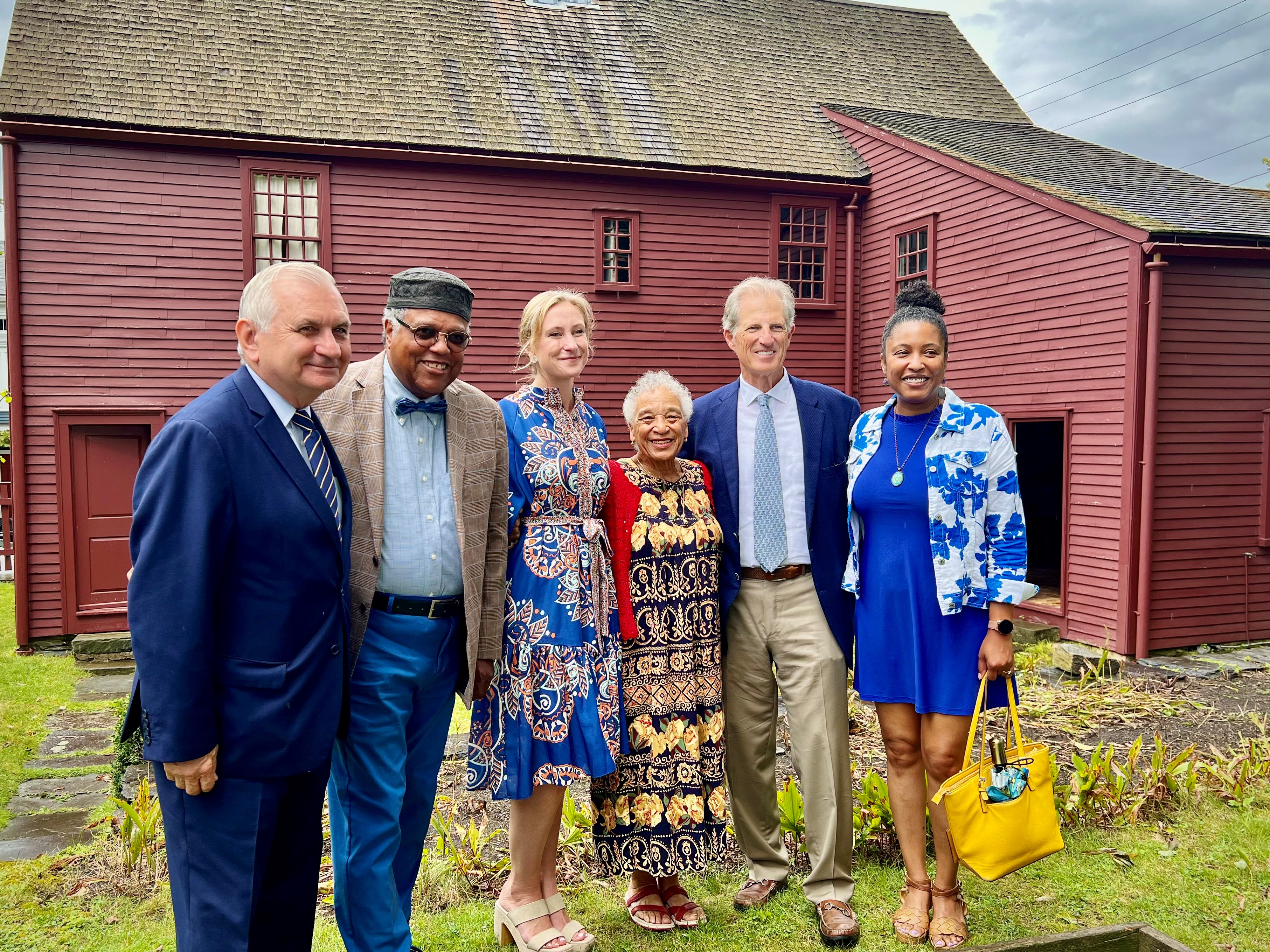From Slavery to Freedom and Survival to Achievement: Reed Helps Newport Historical Society Preserve Historic Wanton-Lyman-Hazard House & Make it a New Hub for Learning About the Black Experience in Rhode Island
NEWPORT, RI – Standing in front of the oldest surviving residence in Newport, U.S. Senator Jack Reed today joined the Newport Historical Society (NHS) to deliver nearly $400,000 in federal funds to help historians preserve the Wanton-Lyman-Hazard House (WLHH) and use it as a multi-purpose center and museum that elevates the stories of enslaved and freed Africans, African Americans, and their descendants.
The NHS is taking steps to preserve the major landmark which was built during the 1690s – around the same time that “the first slaving voyage to bring captive Africans to Rhode Island took place in 1696, when a Boston ship, the Seaflower, brought forty-seven captives from the coast of Africa and sold fourteen of them in Newport.”
Reed says he hopes the renovated WLHH will draw people to learn more about Black history and illuminate the early Black experience in Newport from slavery to freedom and from survival to achievement.
Upgrades made possible by Senator Reed’s $300,000 federal earmark will help fix issues with the building’s exterior and foundation, increase accessibility in accordance with ADA standards, and install plumbing, electrical upgrades, an HVAC system, safety features, and other improvements to make the museum safe and comfortable for visitors. Reed also helped secure a $91,260 federal Preservation Planning grant from the U.S. National Park Service last month to assist the Newport Historical Society with their project titled “Interpretive Planning for the c. 1697 Wanton-Lyman-Hazard House, Anchor Site on the Washington-Rochambeau Revolutionary Route Historic Trail.”
“The Wanton-Lyman-Hazard house has many important stories to tell about Newport, our nation’s founding, and our evolution as a community and society. The Newport Historical Society is doing critical work preserving and sharing the history of this home and the people who lived here, and uncovering the stories that were too often pushed aside or forgotten,” said Senator Reed, a senior member of the Appropriations Committee. “I am proud to deliver this federal funding to ensure the history of enslaved and freed Africans in Newport does not gather dust in the attic. We must preserve and share this history and make it accessible to the broadest audience possible.”
“I am incredibly grateful to Senator Reed for being an early believer in and champion for this project and for creating a designated space for Black history in Newport,” said Rebecca Bertrand, executive director of the Newport Historical Society. “Our collections and properties, including the Wanton-Lyman-Hazard House, have long contained the artifacts of this critical chapter in our history. I invite the community to join us in the pursuit of a better understanding of our shared past and how it informs our lives today, and we look forward to welcoming many visitors to the Wanton-Lyman-Hazard House in the future.”

Once home to two Governors of Rhode Island, who were father and son, the WLHH also housed the families of John G. Wanton, a Quaker lawyer; Daniel Lyman, an officer in George Washington’s army; and Benjamin Hazard, who served as a Speaker of the Rhode Island House of Representatives. A number of enslaved Africans also resided in the attic of the house, including: Briston, Jenny, and Casen during Howard’s ownership, and Cardardo during Wanton’s ownership.
Cardardo Wanton, who was manumitted in 1775, served in the Continental Army during the American Revolution. In 2005, representatives of the Newport Historical Society working in the attic found a nkisi bundle beneath the floorboards that was likely owned by Cardardo Wanton. These artifacts have been displayed at the Smithsonian's National Museum of African American History and Culture in Washington, DC and are currently on display through 2026 as part of “Entwined: Freedom, Sovereignty and the Sea,” at the Mystic Seaport Museum.
The NHS purchased the run-down property in 1927 and undertook efforts to stabilize and refurbish the structure and opened the house for public tours in 1929.
For nearly a century, there has been an ongoing effort to work with top recognized experts to preserve the house. However, due to the condition of and limited accessibility to the historic home, the WLHH has been closed to visitors for years.
When completed, a center for Black history at the WLHH will serve as a collaborative space for local Black history organizations. The 327-year-old home that once housed slaves will become a hub for learning more about enslaved people, their descendants who followed, and diverse and overlooked stories about the people who built and shaped Newport, Rhode Island, and the United States of America. Programming for a center will be designed in conjunction with longstanding key community partners of NHS including Newport Middle Passage Port Marker Project.